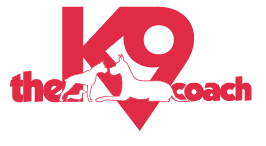Leash Greeting Skills
My Dog Doesn’t Need to Greet Yours On Leash. Period.
There are often big risks associated with meeting another dog on a leash.
Too often it goes poorly and we create fear, trauma, insecurity, and reactivity in a dog.
Too often the humans attached to the leash are not very good at reading body language, assessing the scenario, keeping the leash loose, or getting their dog out of there without dramatics!
When you allow your dog to greet everyone, it is way to easily to create a dog that expects everyone to love him. They get excited on the leash and want to pull you towards everyone for affection, jumping, and play.
You need to learn to say no — most of the time. Certainly, until your dog has some manners, you have your dog’s respect, and he’s under control waiting on permission.
If your dog gets excited or even leash reactive when you are out walking – he may likely pull on his leash. He may even be lunging. There is no need or reason for you to attempt to greet another dog or person under these circumstances. No matter how “friendly” the neighbor suggests their dog may be or how badly the neighbor lady wants to give your dog a treat. and tells you “oh it’s ok”.
Before you go for a walk, be sure to teach and proof some basic skills. At a minimum, you need a good “Come” , “Heel or at least Let’s Go!”, Watch Me, and Sit. You need a trustworthy relationship & clear communication and understanding of your dog’s body language.
Be aware of the distance (threshold of tolerance) your dog can keep it together before he escalates. Before he’s no longer listening to you. Is he even aware of you? Work below that threshold, ideally with a controlled dog and friend cooperating with you.
Reward good decisions from your dog. Reward them big! And as you gain success and confidence, incrementally lower the threshold.
Don’t rush this experience. Again – it is far better to not even take the walk than it is to have successful experiences. If you need the exercise – do this work first, and then walk without the dog!
If You are Going to Setup A Leash Greeting:
Your dog must sit first. Ideally so will the other.
Start at a little further away than hand-shake distance. Pause for a couple of minutes. If you don’t have time to do it well - skip it. In these moments you’re looking at your dog’s body language, the other dog’s interest, and the other handler’s energy, abilities, etc. If you don’t get a good vibe — move on.
From a seated position, I give my dog the verbal signal “okay, say hi” in a neutral voice. Do not add the excitement of your own. That means she has permission to get up and move forward to the other dog.
If my dog moves forward, I step back, keeping the leash loose so the dog has the freedom to move, but without the leashes having the ability to cross each other. It is very important to NOT let the leashes cross & tangle. It is also important for you to keep the leash loose. If you are adding tension, you will be potentially triggering your dog. I’m at a distance where if I continue moving back, the leash engages, is tangle-free, and my dog is out of the scene safely (assuming the other handler doesn’t move forward with their dog)
After a few seconds, 15 tops, I recall my dog (you’ll need a good recall), and ask her to sit again.
We may decide to rinse and repeat again — or NOT.
We are NOT going to play on leash — we are truly just going to say hi, sniffy sniffy, a play bow or two, and move back. Like a short handshake, or hug with a friend. Don’t overdo it. Play on a leash is asking for entanglement & drama. IF and ONLY IF I think the other dog & handler can handle play, I’ll remove my dog’s leash for a few moments.
When to Say No To Leash Greetings:
Either dog is excited & pulling to go greet.
Either dog is given avoidance signals — turning away from the other dog, stepping back, trying to hide, etc.
Either dog is posturing, fixated, or stiff,
Any growling, lip curls, etc.
The other handler seems nervous, inexperienced, not listening to you, or unware of her own dog’s signals. If they say the dog is “new to them” — ie a new rescue/foster — it’s a hard no until the dog has more healthy socialization.
Advocate for your dog. He needs to see you handle the situation and set the tone for what will happen.
Many times the answer to a greeting needs to be Nope Not today. Even to a BFF playmate.
